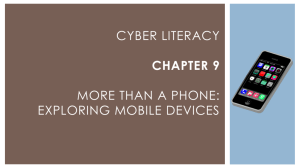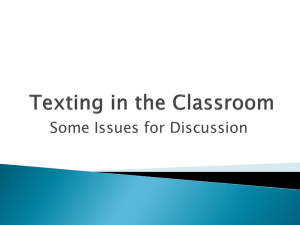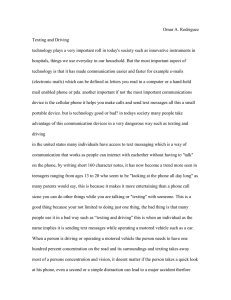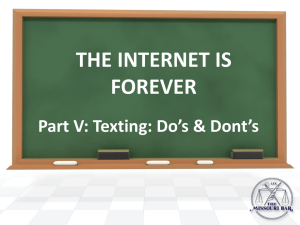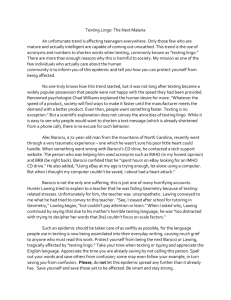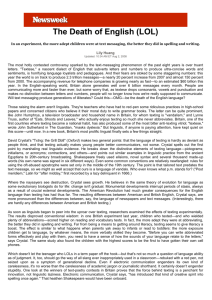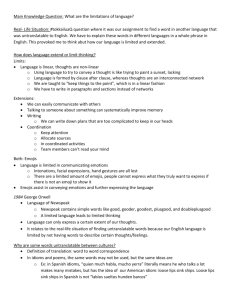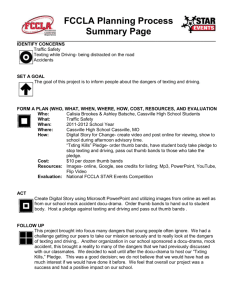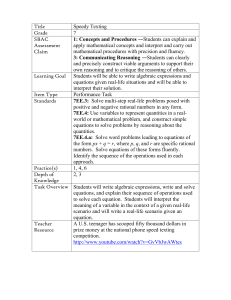Sissy`s presentation - Lincoln County Schools
advertisement
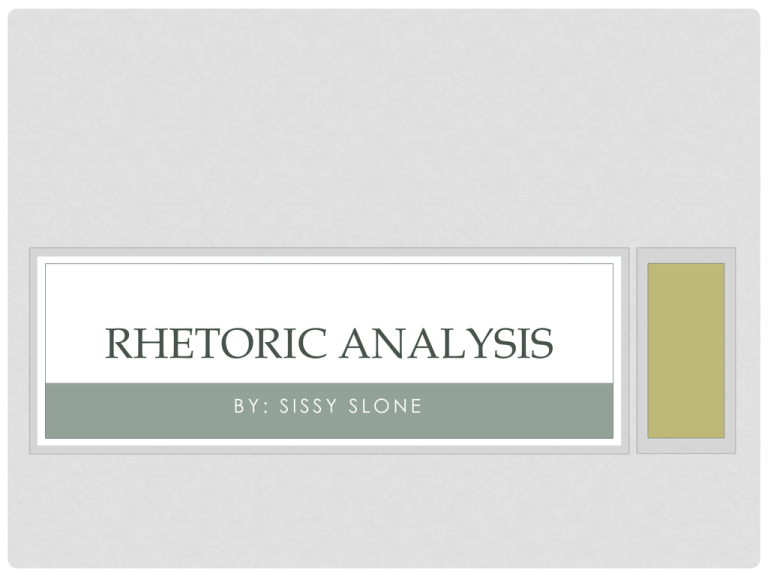
RHETORIC ANALYSIS BY: SISSY SLONE Title: Russian Roulette Artist: Richard Read Publication: Coyne Communications and AutoWeek Time Period: 21st Century Purpose: Anti texting while driving advertisement Historical Context: N/A WHAT TECHNIQUES/ COMPOSITION FACTORS HELP EMPHASIZE THE PURPOSE? • The artist, Richard Read, created a simple to the point visual by creating a head on vantage point to get the purpose across. He also uses dark subtle colors in order to portray a gloomy atmosphere that fits the objective of the visual properly. The proportion of the Blackberry to the revolver is similar and accurate to there actual size. Read went for a straight to the point visual, lacking bright neon colors and motion to imitate the negative impact and severity texting while driving has on our lives. WHAT IS THE PURPOSE/ INTENTION OF THE AD? HOW IS THE PURPOSE CONVEYED TO THE VIEWER? • The purpose of this ad is to acknowledge the dangers of texting while driving. It is conveyed by the revolver- the type of gun used for the suicide game “Russian Roulette,” and the cell phone. They are insinuating that texting while driving is the equivalent to suicide, and they are expect the viewers of this ad to have prior knowledge of the dangers associated with texting while driving. WHO IS THE INTENDED AUDIENCE? • The intended audience is all drivers that have a cell phone with texting capabilities. You can tell this is the intended audience of the ad because it applies to people that make the choice to use their cell phone while driving, they are the one putting their life as well as others in danger. ACCORDING TO THE RHETORICAL TRIANGLE, WHAT APPEALS APPLY TO MY VISUAL? • Logos: The visual portrays a logical appeal by incorporating the death toll, and supports the anti texting while driving ad with facts. It proves how deadly texting while driving can be. • Pathos: The visual also takes a different approach by appealing to those that have either lost a loved one to a gun, vehicle, or cellular involved accident. The blood symbolizes the loss of life, and is a reminder of such tragic events. • Ethos: N/A to this visual. WHAT IS THE POINT OF VIEW OF THE ADVERTISEMENT? • The advertisements point of view is against texting while driving. Someone that might agree with this statement or ad could be one that has lost a friend or family member to an accident associated with texting while driving. Someone that might disagree with this statement or ad could be one that texts and drives on a daily basis and doesn’t plan on stopping. • Read, Richard. 2010. Photograph. www.thecarconnection.com, New York. Print

